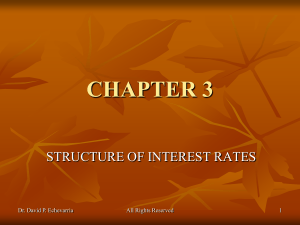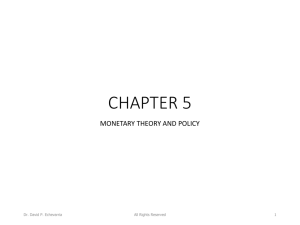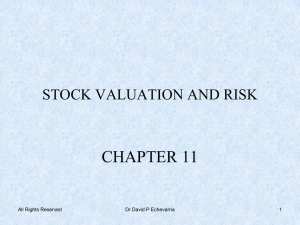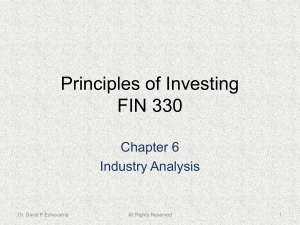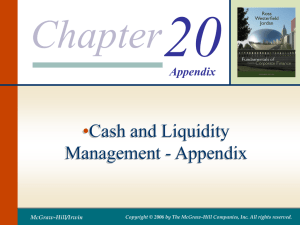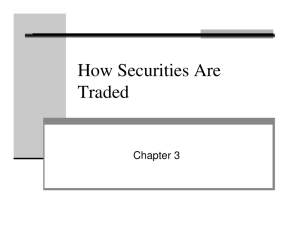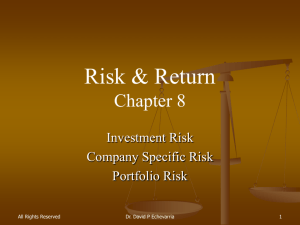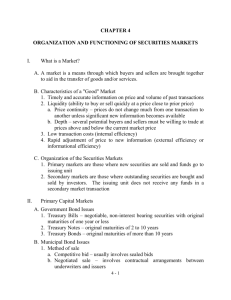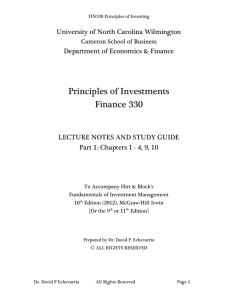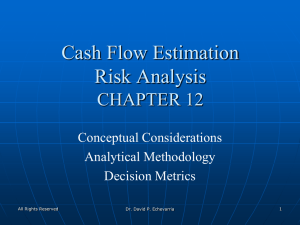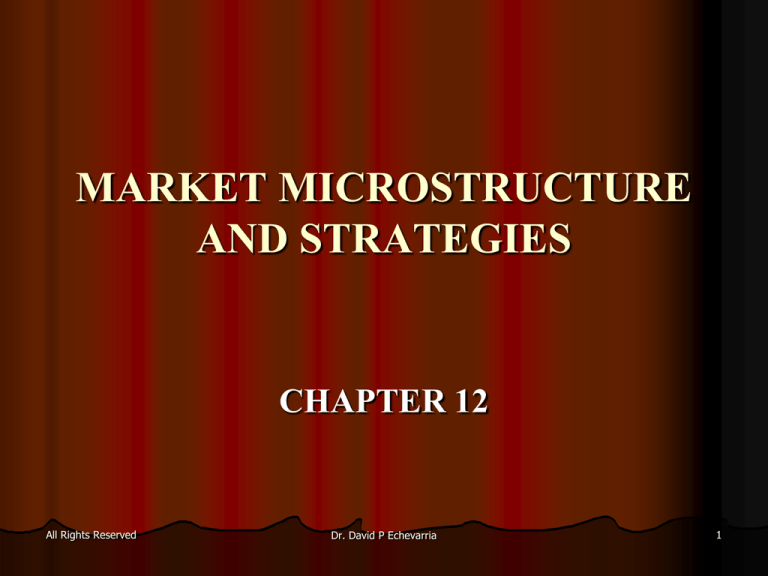
MARKET MICROSTRUCTURE
AND STRATEGIES
CHAPTER 12
All Rights Reserved
Dr. David P Echevarria
1
STOCK BROKERS
A. Full service brokerage firm
1. Assigned broker - personalized service
2. Gives investment advice (research reports)
3. Executes orders
B. Discount broker
1. Executes orders
2. Lower commissions
3. Some advise (research reports)
All Rights Reserved
Dr. David P Echevarria
2
STOCK BROKERS
C. Brokerage Accounts
1. Cash account
Pay full cost of all securities purchased
2 business day settlement
2. Margin account
Finance portion of purchases (interest charges)
Same day settlement
3. Securities Investor Protection Corporation SIPC
Insures brokerage accounts up to $500,000
Does not cover market losses
All Rights Reserved
Dr. David P Echevarria
3
MARKET TRADING DYNAMICS
A. Market Order
1. Buy or sell at the best current price
2. Settlement in three business days
3. Round lot = 100 shares
B. Limit Order
1. Puts a limit on price
2. Time period can vary: day, GTC
C. Stop Order
1. Becomes order if price reaches specified price
2. No guarantee of execution at specified price
All Rights Reserved
Dr. David P Echevarria
4
MARKET TRADING DYNAMICS
D. Long Position
1. Expectation - market heading higher
2. Purchase stock via market order at the Ask
3. Purchase stock via limit order at specified price
E. Selling Short
1.
2.
3.
4.
Expectation - market heading lower
Stock borrowed from broker
Profits on drop in prices
NYSE uptick rule discontinued
All Rights Reserved
Dr. David P Echevarria
5
MARKET TRADING DYNAMICS
F.
Block Trade
1.
2.
G.
Program Trading
1.
2.
3.
4.
5.
H.
Purchase or sale of 10,000+ shares
NYSE Allows block trades away from floor
Computer generated buy/sell decisions
Quick reaction to mispricing or momentum
Index arbitrage most popular motivation
May exaggerate market moves – use of "collars"
May trade ahead of small orders
Electronic Communication Networks (ECN)
1.
2.
Electronic trading between direct access brokers
Increases order execution, liquidity
All Rights Reserved
Dr. David P Echevarria
6
REGULATION OF FINANCIAL
MARKETS
A. Securities Act of 1933
1. Registration of securities
2. Prospectus required - full and fair disclosure
B. Securities Act of 1934
1. Securities and Exchange Commission (SEC)
2. Insider trading prohibited
3. Reporting requirements - form 10-K
C. State regulations
1. Blue sky laws - vary by state
All Rights Reserved
Dr. David P Echevarria
7
REGULATION OF FINANCIAL
MARKETS
D.
Regulation in other countries
1.
2.
3.
4.
E.
SEC Oversight / Self-Regulation
1.
2.
3.
4.
F.
Many follow US model
Canadian is provincial rather than national
Japan regulated by the Ministry of Finance
Germany does not separate banking and securities industries
SEC - EDGAR System
National Association of Securities Dealers (NASD): Rules of
conduct
NYSE: Market surveillance - Audit trail
NASDAQ: Recent reforms following SEC investigation
Managing Market Volatility
1.
2.
Trading Halts
Circuit Breakers (maximum single day move before "slow down")
All Rights Reserved
Dr. David P Echevarria
8
HOMEWORK QUESTIONS
A. How cash accounts differ from margin accounts?
B. What happens when you get a margin call from
your broker?
C. How does a trader earn profits in a short sale? Long
position?
D. What is the minimum number of shares in a block
trade? Round lot?
E. What is program trading?
F. What was the primary purpose of the 1933
Securities Act? 1934 Act?
G. What does the SEC’s EDGAR system do?
All Rights Reserved
Dr. David P Echevarria
9



